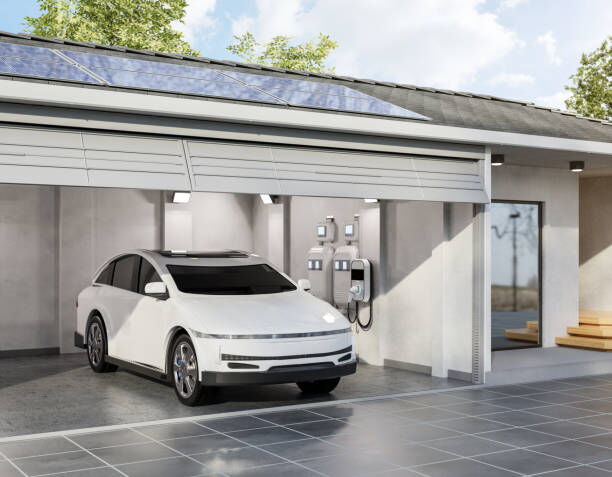As electric vehicles (EVs) continue to grow in popularity, understanding your home charging options is crucial for maximizing convenience and efficiency. This guide delves into the various types of home charging options, how to choose the right one, and key considerations for optimizing your EV charging setup.

A plug-in charger is the simplest and most accessible option for home EV charging. It uses a standard New Zealand household plug and can add approximately 10 km of range per hour to your EV’s battery. For example, plugging in your EV at 7 PM and unplugging at 7 AM would provide an overnight range increase of about 120 km. This option is ideal for EV owners with minimal daily driving needs or those with smaller battery capacities.
The 16A charger uses a caravan-style plug or CEE and must be installed by a certified electrician. With double the charging speed of the standard plug-in charger, it can add about 240 km of range overnight. This option is suitable for drivers who need a faster charge without committing to a permanent wall charger.
Wall chargers are the most efficient and powerful home charging solution. They deliver around 40 km of range per hour, enabling most EVs to achieve a full charge overnight, or roughly 480 km of range in 12 hours. Wall chargers are particularly advantageous for households requiring regular top-ups or for EVs with larger battery capacities. These chargers are often equipped with additional features like smart charging and load management.
Choosing the right home charger depends on several factors, including your daily driving distance, the size of your EV’s battery, and your household’s energy needs.
Under 100 km per day: A standard plug-in charger (8A) is sufficient for most users with moderate driving distances.
Over 100 km per day: A 32A wall charger is recommended to ensure your EV has adequate range for daily use and unexpected trips.
Small Battery EVs: Older models like the first-generation Nissan Leaf can easily achieve a full charge overnight using a standard plug.
Larger Battery EVs: Newer models, such as the MG ZS EV or Tesla vehicles, require more charging time. A standard plug might take two days to fully charge these vehicles, making a wall charger a faster and safer option.
Modern EVs often come equipped with built-in smart features, such as scheduled charging. This makes a cost-effective 32A wall charger a practical choice. For users seeking advanced integration, smart wall chargers allow remote monitoring, energy usage tracking, and solar power optimization.
If you have a solar energy system at home, integrating it with your EV charger can help maximize the use of renewable energy. Instead of exporting excess solar power to the grid, you can use it to charge your EV, reducing both your carbon footprint and energy costs.
Tethered Chargers: These come with a permanently attached cable, making it convenient for daily use. However, they are typically restricted to one connector type (Type 1 or Type 2).
Socket Chargers: These chargers offer more flexibility, as you can swap cables to accommodate different connector types. For instance, most New Zealand-new EVs use Type 2 connectors, while many Japanese imports require Type 1 connectors.
A typical home has a maximum electrical capacity of 63A. If your EV charger uses 32A, it will consume about half of your home’s total capacity. While this isn’t a problem for most households, running high-energy appliances like spas, heat pumps, and ovens simultaneously could push your home’s electrical load to its limit. Load balancing technology can help manage this by adjusting the charging power to prevent overloading.
Investing in a home charging setup offers several advantages:
Charge your EV overnight while you sleep, ensuring it’s ready for the day ahead.
Charging at home is often cheaper than using public chargers, especially if you utilize off-peak electricity rates.
With solar integration, you can reduce reliance on the grid and lower your energy bills.
Choose a setup tailored to your vehicle’s needs and your household’s energy usage.
Charging an EV at home is an essential part of owning an electric vehicle. Whether you opt for a basic plug-in charger, a mid-range 16A solution, or a high-performance wall charger, the right choice depends on your daily driving habits, battery size, and energy requirements. By considering smart features, load balancing, and solar integration, you can create an efficient and sustainable charging solution tailored to your lifestyle. Transitioning to electric mobility has never been easier, and with the right home charging setup, you can enjoy the full benefits of EV ownership.